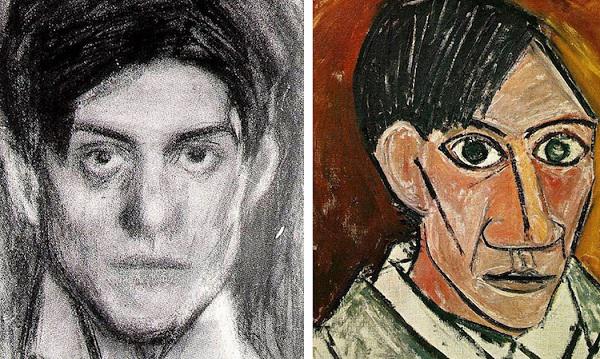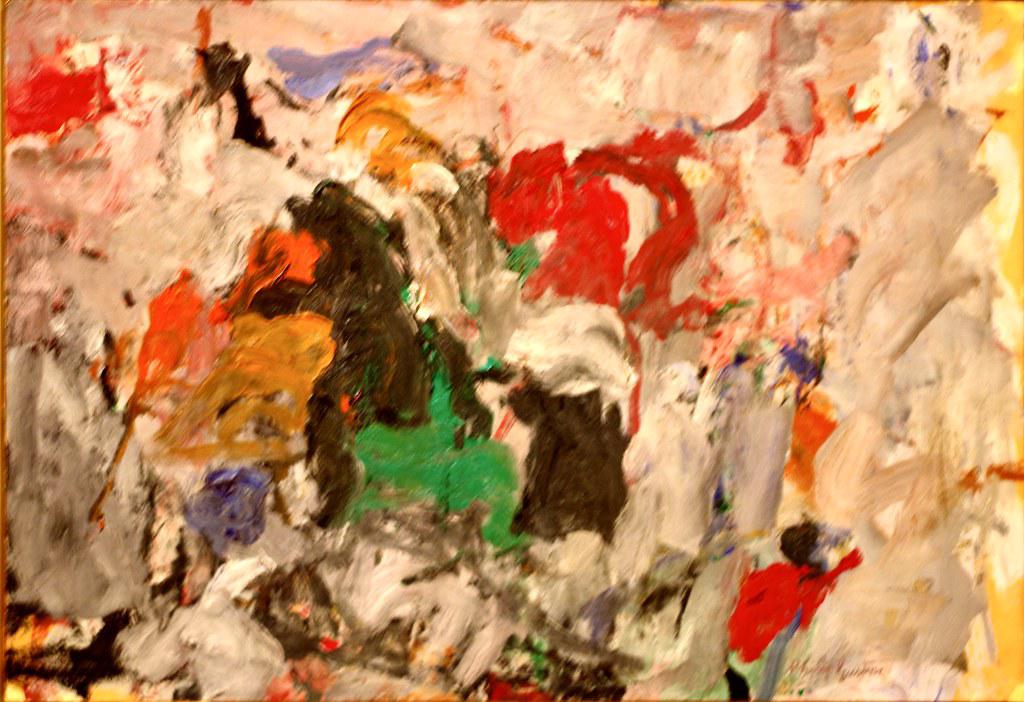Abstract portraiture stands as a testament to the dynamic interplay between emotion and artistic expression. It transcends traditional boundaries, inviting viewers to engage with art on a deeper, more personal level. This form of art captures the essence of human experience, weaving together colors, forms, and textures to create a visual story that resonates with the viewer's own emotions and interpretations.
Historical Evolution of Abstract Portraiture
Abstract portraiture is a vibrant example of the continual reimagining of art forms. In the early 20th century, pioneers like Pablo Picasso and Georges Braque employed Cubism to break subjects into geometric forms, altering how artists approached individuality and identity. Their work shifted beyond merely capturing likeness to exploring multiple dimensions of perspective.
Amid World War I, Expressionism emerged, using exaggerated forms and distorted realities to elicit emotional responses. Edvard Munch, famous for "The Scream," amplified psychological depth in his portraits, letting distortion reflect emotion.
Wassily Kandinsky's synesthetic approach infused portraits with color and music. For Kandinsky, a splash of blue was as melodic as a cello; his colors sang, altering the viewer's emotional landscape more than physical features could.
In the post-war period, Abstract Expressionism took the stage, with artists like Jackson Pollock transforming the canvas into an arena of action. These works invited viewers to peer behind the veil of the psyche, showcasing primal instincts on the canvas's surface.
Lee Krasner invigorated the scene with her dynamic compositions. Her self-portraits are less about features and more about energy—a swirling dance of colors capturing the essence of identity rather than a static image.
Contemporary artists now blend technology with tradition, crafting faces not just to be seen but experienced across multiple senses. Artificial intelligence collaborates with human creativity to push boundaries further, yet always with a nod to their audacious ancestors who dared to redefine recognition.
Through each era, abstract portraiture has served as a looking glass into both individual and collective identities. These artists didn't aim to neatly capture reality. Instead, they painted mirrors that reflect the soul's raw core.

Techniques and Styles in Abstract Portraiture
Abstract portraiture revamps traditional techniques in pursuit of innovation. The manipulation of color, form, and texture is essential in crafting portraits where essence and emotion reign supreme over exactitude.
Artists employ color as a language of emotion. A vibrant red might convey passion or angst, while a translucent yellow embodies subtle notes of joy or enlightenment. These chromatic choices are less about complexion and more about rendering the invisible visible.
Form and structure are reinvented with zealous abandon, pulling influence from early Cubism. Faces are deconstructed and reconstructed, existing in areas outside the familiar. Instead of fixed contours, artists might engage in geometric play, crafting angular planes that intersect and dissolve into one another.
Texture becomes a storytelling medium, adding depth to each portrayal. The use of thick impastos or airy, delicate brushstrokes mimics the tactile intricacy of human experience. Pollock's sweeping gestures find a testament in abstract portraiture's layered application of paint—often, the painting itself becomes a tangible map of the artist's exploration into identity.
Some contemporary artists now harness technology to amplify traditional techniques. Digital tools recreate and reimagine textures, expanding the horizons of what abstract portraiture can express. The artist's touch becomes encoded in pixels, a marriage of the handmade with the mechanical.
By interweaving these techniques, abstract portraiture refuses to conform to a linear story. Instead, it dances between the past and the future, a confluence of skill and spontaneity. Each brushstroke or pixel is a whisper of human emotion, a reconstructed reality that asks not to be understood at face value but felt within the core.
These intricate expressions invite the viewer to lean in closer, to decipher and feel, to embrace the blurred lines as they wish, ultimately crafting their own story amid the abstract world.
Influential Artists in Abstract Portraiture
Francis Bacon's visceral approach to abstractions of the human form unpeels layers of psychological depth. His portraits, often described as both haunting and magnetic, abandon conventional beauty and instead lay bare the anguished tales of the human psyche.
Yayoi Kusama's polka-dotted universe merges infinity with introspection. Her works on canvas are vibrant, almost hypnotic crescendos of color and form, encapsulating the boundless yet intimate exploration of identity. Kusama's obsession with repetition mirrors the rhythmic dance of life's undulating patterns.
Jean-Michel Basquiat's electrifying energy and cultural fluency infuse each portrait with social commentary pulsating with life and struggle. His neo-expressionist style transcends traditional forms, confronting issues of race, power, and identity with raw honesty. Each line, each vibrant slash of color, exists as a cry of resistance.
Julie Mehretu's art, a labyrinthine convergence of line and layer, redefines space itself. Her portraits are less about individual features and more about the spectrum of experiences and global histories, woven into monumental compositions. She transcends the act of portrayal, crafting landscapes of identity wherein the viewer may lose themselves in myriad perspectives.
Mary Weatherford invites us into her world where light and color converge in harmony. Known for her luminous neon-adorned canvases, Weatherford's portraits defy the flatness of the surface, instead radiating an ambient glow that breathes life into abstraction. Her work reimagines color's potential, intertwining it with the intensity of memory and emotion.
Through each of these artists, abstract portraiture unfolds as a living dialogue between artist and viewer—a dance of shadows and luminescence, echoing the vast diversity of human experience.
The Role of Emotion and Expression
In abstract portraiture, emotion and expression are the lifeblood that courses through each creation. Unlike traditional portraiture, which hinges on the accuracy of facial features, abstract portraiture explores the depths of human psyche, channeling raw emotion to illuminate the intangible essence of being.
Artists become alchemists of feeling, transforming fleeting instincts and intricate emotional landscapes into visual symphonies. Their canvases resonate with echoes of joy, sorrow, love, and despair—elements that are felt more than seen. The ambiguity of form allows for open-ended engagement, where every stroke and color choice becomes a portal to the artist's internal world.
Abstract portraiture thrives on this interplay of expression, where colors bleed into the canvas like threads of an intimate tale, and shapes and textures serve as tactile revelations of the soul. Generous swirls of paint can suggest a stormy turmoil within the human spirit, or jagged edges may hint at underlying tensions.
The role of the viewer is crucial—abstract portraits demand empathy and imagination. They invite each observer to become a co-creator of meaning, bridging the artist's initial intent with personal interpretation. This open dialogue allows the artwork to transcend its static form, transforming into a living exchange that resonates differently with each individual.
Through this dynamic interplay of emotion and interpretation, abstract portraiture achieves what few forms can—an intimate conversation across the expanse of art and heart, where every abstract detail provides a glimpse into the profound spectrum of human experience.

Contemporary Trends in Abstract Portraiture
In the contemporary art world, abstract portraiture is experiencing a renaissance of experimentation and innovation, propelled by new technologies and materials. Today's artists are merging traditional techniques with avant-garde approaches to reflect the intricacies of modern identity and societal discourse.
Digital technology is being incorporated to create immersive portraits that come alive across multiple platforms. Artists are weaving intricate tales that unfold through augmented reality and interactive installations, inviting viewers to step inside the artwork itself.
The use of innovative materials broadens the artistic palette, offering new textures and dimensions. Artists now experiment with recycled metals, holographic films, and eco-friendly materials, amplifying the ongoing dialogue between art and sustainability. These material choices engage with contemporary themes of environmental consciousness and social responsibility.
There's a thematic shift towards inclusivity and diversity. Artists are painting the untold stories of marginalized communities and challenging traditional euro-centric perspectives. Through varied mediums—be it graffiti-inspired layers or textile weavings—they craft portraits not bound by appearance, but by profound stories and emotions.
Artists like Kehinde Wiley fuse historical influences with modern motifs, often reimagining classical art forms to cast contemporary figures in roles traditionally denied to them. This synthesis adds layers of meaning, intertwining past with present, and inviting viewers to reevaluate historical perspectives through a modern lens.
The influence of conceptual art seeps into contemporary abstract portraiture as well, with artists embracing the idea that the concept behind the work is as significant as the visual impact. This approach invites the viewer to decode the layers of meaning embedded within each piece, transforming the artwork into an evolving conversation between creator and observer.
Despite new materials and themes, today's abstract portraiture retains its core dedication to emotion and experience. These works continue to resonate on a visceral level, inviting viewers to not only witness but to feel, capturing the spirit of our time with innovation, empathy, and unflinching inquiry.
At its core, abstract portraiture is a celebration of human emotion and identity. It invites us to look beyond the surface and connect with the deeper stories that each piece holds. As we engage with these artworks, we find reflections of our own experiences, making abstract portraiture not just an art form but a shared journey of discovery and understanding.
- Kandinsky W. Concerning the Spiritual in Art. Dover Publications; 1977.
- O'Keeffe G. Georgia O'Keeffe. Viking Press; 1976.
- Pollock J. Jackson Pollock: Interviews, Articles, and Reviews. The Museum of Modern Art; 1999.
- Rothko M. The Artist's Reality: Philosophies of Art. Yale University Press; 2004.
- Wool C. Christopher Wool. Taschen; 2012.





















